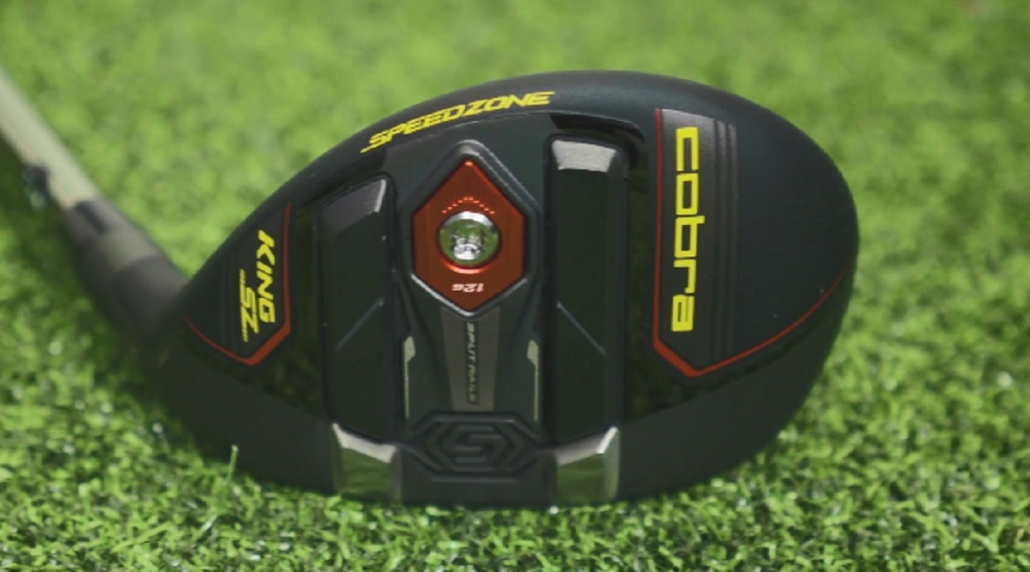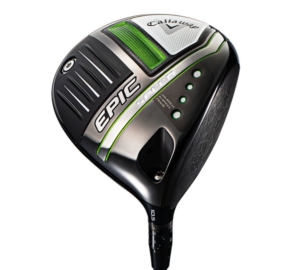4 Wood vs 3 Hybrid – Which Club Is Better To Carry
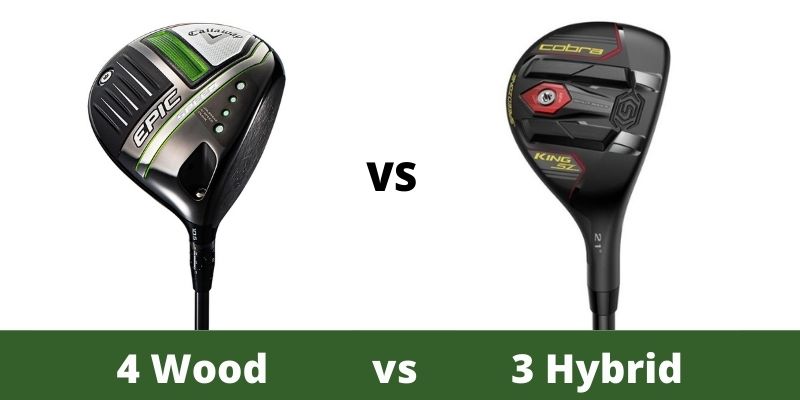
Which club is better to carry between a 4 wood vs 3 hybrid? I recently read an article about 4-woods and was stunned to see it get a mention, given the rarity of the design. The last time I heard about any Pro swinging one was Justin Leonard back in 2011.
However, rare as it is, you can still source one. It got me thinking, how would the lesser-known fairway wood match up against a 3-hybrid? In this post, I assess the characteristics of both clubs to see which one you should carry, if not both.
Intro To The Clubs And Why The Right Choices Are Important
Overview Of 4 Wood vs 3 Hybrid
Both golf clubs reduce friction with the turf to deliver improved turf interaction. Their design makes them a suitable option from the tee and rough. The larger clubhead on a 4-wood reduces its effectiveness from the rough. That makes the hybrid a superior choice.
I must admit, I don’t follow the rules when it comes to rough. I am always up for the challenge of bombing a fairway wood from any lie if I am 200 plus yards out.
In addition, a 4-wood and 3-hybrid are crafted with low CG and an enhanced sweet spot. This composition produces consistent ball speed and restricts sidespin, resulting in optimal distance and accuracy.
Key Differences Between 4 Wood vs 3 Hybrid

Loft
The clearest difference between the two clubs is their loft. Golf Monthly reports that the stock loft on a 4-wood is 17-degrees and a 3-hybrid checks in at 19. In essence, these two degrees are an additional club.
For example, if you purchase a 3-hybrid instead of a 4-wood, you will suffer distance gaps in your bag. That could present challenges on shots that are too long for a 3-wood but too short for your 4-wood.
If you own a weak lofted 3-wood that is 16-degrees or more, you can skip the 4-wood. You will have no distance gap problem between a weak lofted 3-wood and a standard 3-hybrid.
Clubhead
The clubhead on a 4-wood is slightly enlarged compared to a hybrid. However, fairway woods feature an aerodynamic design that reduces drag and optimizes clubhead speed on your downswing.
Where the size plays a role is on shots from the rough. The larger clubhead can find it challenging to traverse thick rough and prompt a clean strike.
Shaft
Although the difference is not severe, the shaft length differs on a 3-hybrid and 4-wood. On average, a 4-wood shaft measures 42-inches, whereas a 3-hybrid is 41-inches.
Distance
Given the rarity of a 4-wood, Trackman does not provide data on PGA Tour distances. However, we can determine an estimate based on the 3-wood, 5-wood, and hybrid data. Tour pros would hit a 4-wood from approximately 235 to 237-yards. That is 5 to 7-yards further than a 5-wood.
Interestingly, a 5-wood that is 1-degree stronger than a 3-hybrid travels 5-yards further. As a result, a 4-wood should produce extra yardage over the hybrid.
What’s Better Off The Deck
You can hit either of these clubs off the deck with ease. A 4-wood is better if you intend to generate shape on your shot. However, a 3-hybrid is straighter and more consistent for the average golfer.
What’s Better From The Rough
A 3-hybrid is a better option from the rough. These clubs have a reduced head size and produce less friction than a larger fairway wood head.
Which Club Is More Accurate?
The 3-hybrid produces straighter ball flight to deliver more accurate results.
Which Club Is More Versatile & Workable
You have a better chance of generating the sidespin required to shape your shot.
Which Club is better for high handicappers?
A hybrid is a better option for high handicappers because of its forgiveness, accuracy, and consistent distance.
Loft & Distance Comparison Table
Club |
Loft (degrees) |
Distance (Yards) |
4-Wood |
17 |
235 |
3-Hybrid |
19 |
225 |
Pros And Cons & Characteristics Of A 4 Wood Over 3 Hybrid
Pros
- Increased distance
- It can replace your 3-wood
- You can use it as an alternative to your driver off the tee
- The longer shaft produces faster clubhead speed
- Higher workability
Cons
- The larger head shape causes friction in thick rough
- It is a difficult club to source
- Produces higher sidespin
Pros And Cons & Characteristics Of A 3 Hybrid Over 4 Wood
Pros
- Exceptional from the rough and fairway
- Produces straighter shots
- Highly forgiving
- Ideal for slower swinging golfers
Cons
- It does not deliver as much distance
- Restricts workability
Favorite 4 Wood
Callaway Epic Speed
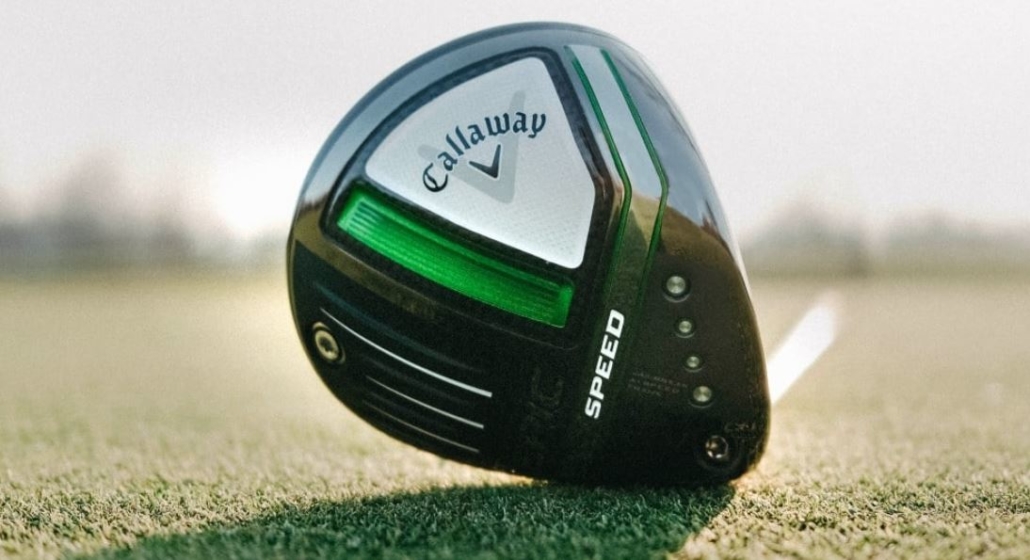
Pros
- Forgiving
- Easy to launch
- Delivers accelerated ball speed
- Increased distance
- A balanced combination of spin and ball speed
Cons
- No interchangeable weight
- Expensive
Hats off to Callaway for taking the path less traveled by producing a 4-wood. The Epic Speed features A.I. Jailbreak Velocity Bars which encourage maximum face flex on your downswing. This flex prompts rapid ball speed for consistent distance, even on strikes low off the face.
The engineers fitted a forged C300 maraging steel face to ensure durability and flexibility. The clubface produces optimal speed and spin, resulting in optimal ball flight for added carry distance.
Callaway took a different approach when it came to CG, by placing it low and forward. This enables the club to produce ample spin for a mid-launch. Overall, this 16.5-degree 4-wood is forgiving, long, and easy to launch. That makes it ideal for mid to high handicappers.
Check Out More Reviews Here:
Favorite 3 Hybrid
Cobra Golf Speedzone
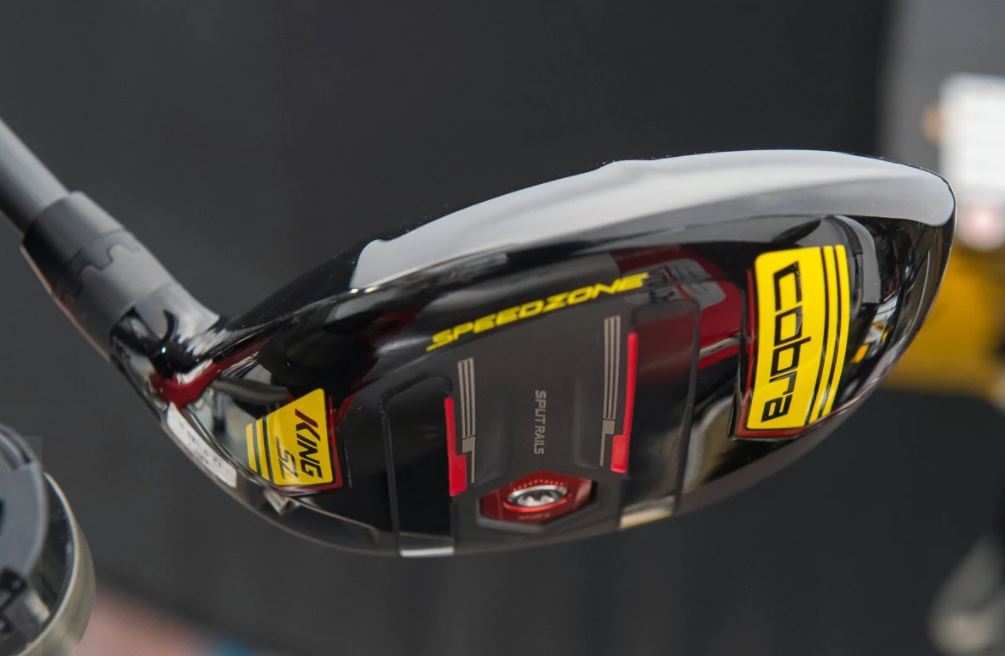
Pros
- Produces straighter shots
- High launch
- Soft landing
- Forgiving
- Consistent distance
Cons
- The larger head may struggle in the rough
- It reduces your ability to shape shots.
The 19-degree Cobra Golf Speedzone hybrid features an enhanced sweet spot for explosive ball speed and a high launch. These features collaborate to deliver optimal distance and a soft landing on approach.
Adding to the flight of Cobra Speedzone shots is extreme back weighting. Mass is inserted low and back to reposition the CG. This position helps the average golfer launch high-flying shots and land the ball softly. Even on mishits.
In addition, Dual Baffler Rails are applied to produce maximum stability and speed through the grass. This helps you strike the ball cleanly from the rough or the fairway. However, its larger than standard head shape may struggle in bushy rough.
Moreover, the head shape is crafted to boost moment of inertia (M.O.I). That means it resists twisting during your swing to remain square through impact. Therefore, you enjoy straighter shots with reduced risk of a hook or a slice.

Check Out More Reviews Here:
Conclusion
Now that we have assessed both clubs in detail, we can see that they are different. The main dissimilarity is the loft. The 4-wood is slightly stronger and should deliver increased distance over the 3-hybrid.
Conversely, the 3-hybrid is far more forgiving and produces high, straight shots that land softly. If you have a weak lofted 3-wood, there is no reason for you to acquire a 4-wood. However, if you enjoy the higher apex of this fairway wood, it might be time to swap.
As far as the 3-hybrid is concerned, I feel it has a place in the bag of every casual golfer with a slow to moderate swing speed. Those in the market for a high launching, soft landing hybrid should think about the Cobra Golf Speedzone.

